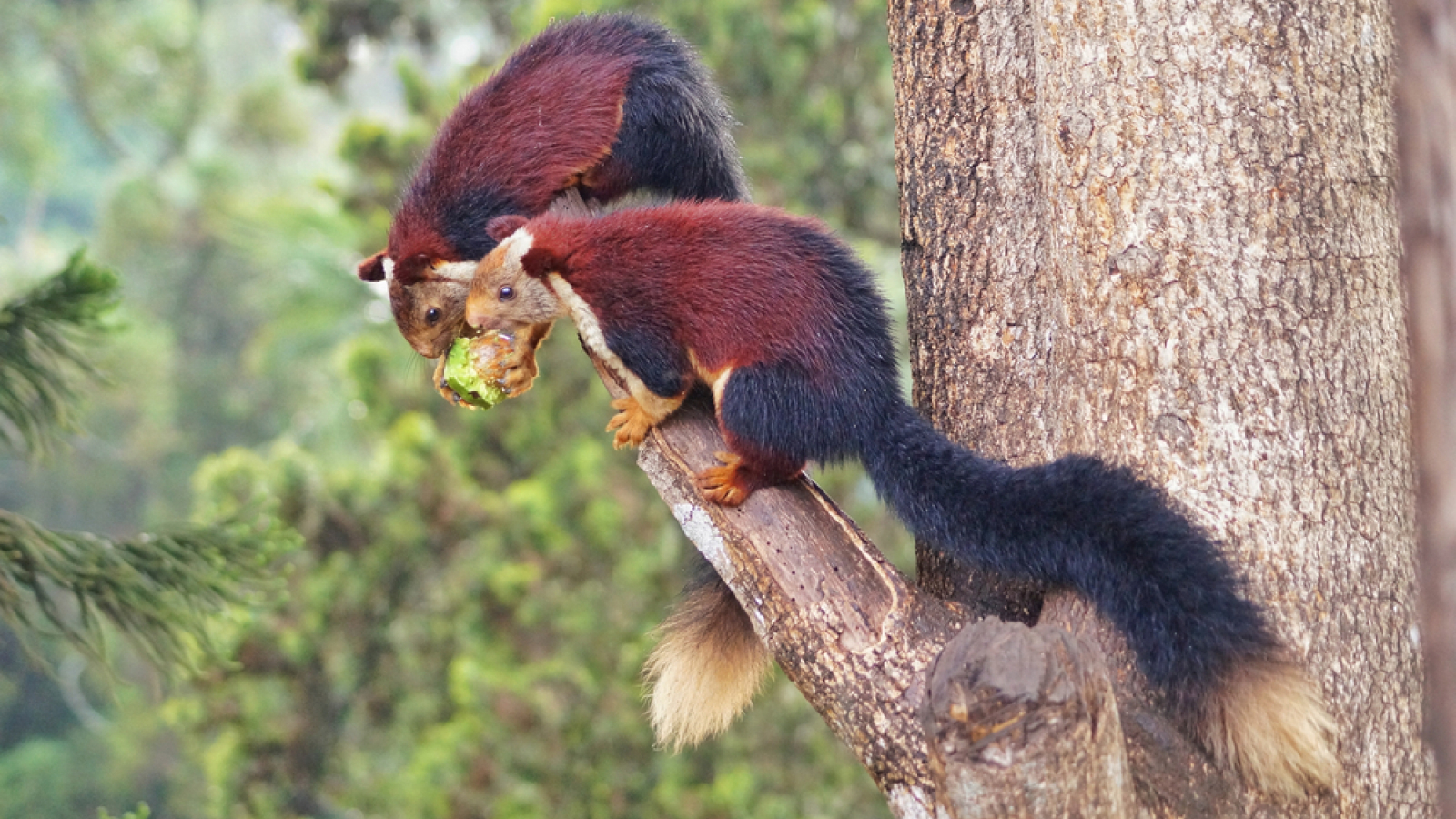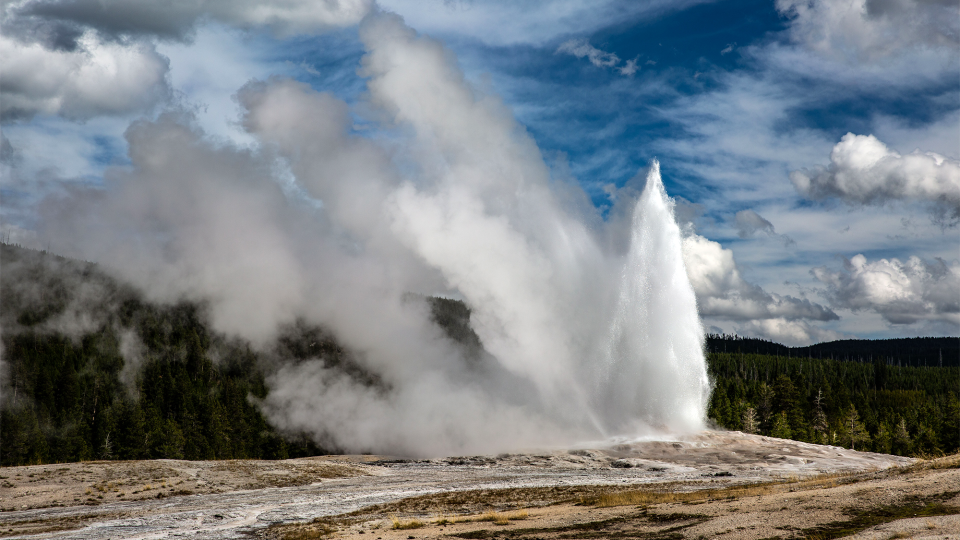Name: Indian giant squirrel or Malabar giant squirrel (Ratufa indica), commonly known as the rainbow squirrelWhere it lives: Forests and woodlands in pockets across central and southern India What it eats: Fruits, leaves, bark, seeds, occasionally bird eggs and insectsWhy it’s awesome: While the belly and arms of Indian giant squirrels are a light beige color, the rest of their fur is more elaborately colored, with shades of orange, purple and red, earning them the nickname “rainbow squirrels.”These vibrant creatures can reach up to 3 feet (1 meter) in length — about twice the size of their American relative, the eastern gray squirrel (Sciurus carolinensis). They have earned the title of the world’s largest squirrel species in the Guinness World Records.Related: How do squirrels remember where they buried their nuts?Indian giant squirrels inhabit only in forests, where they construct multiple round nests, known as dreys, high up in the trees. They utilize forks in the branches to support the nests and weave them with the stems of climbing plants, and then add padding to the nests with leaves to make them comfortable. Unlike many other squirrels, Indian giant squirrels store food in the treetops.  The Indian giant squirrel is known for its colorful fur. (Image credit: jp signature clicks/Shutterstock)This species is generally solitary, forming pairs only during its two breeding seasons — between February and March and again in August to September — coinciding with the pre- and post-monsoon seasons. But why are Indian giant squirrels so colorful? Scientists aren’t certain, but the vibrant fur may help them blend into their forest surroundings. One study published in 2021 observed an Indian ground squirrel remaining completely still in leafy branches for half an hour while a serpent eagle hovered above. “They remain calm and quiet,” the authors wrote, adding that they spread their legs and gripped the branches to help avoid detection.
The Indian giant squirrel is known for its colorful fur. (Image credit: jp signature clicks/Shutterstock)This species is generally solitary, forming pairs only during its two breeding seasons — between February and March and again in August to September — coinciding with the pre- and post-monsoon seasons. But why are Indian giant squirrels so colorful? Scientists aren’t certain, but the vibrant fur may help them blend into their forest surroundings. One study published in 2021 observed an Indian ground squirrel remaining completely still in leafy branches for half an hour while a serpent eagle hovered above. “They remain calm and quiet,” the authors wrote, adding that they spread their legs and gripped the branches to help avoid detection.














